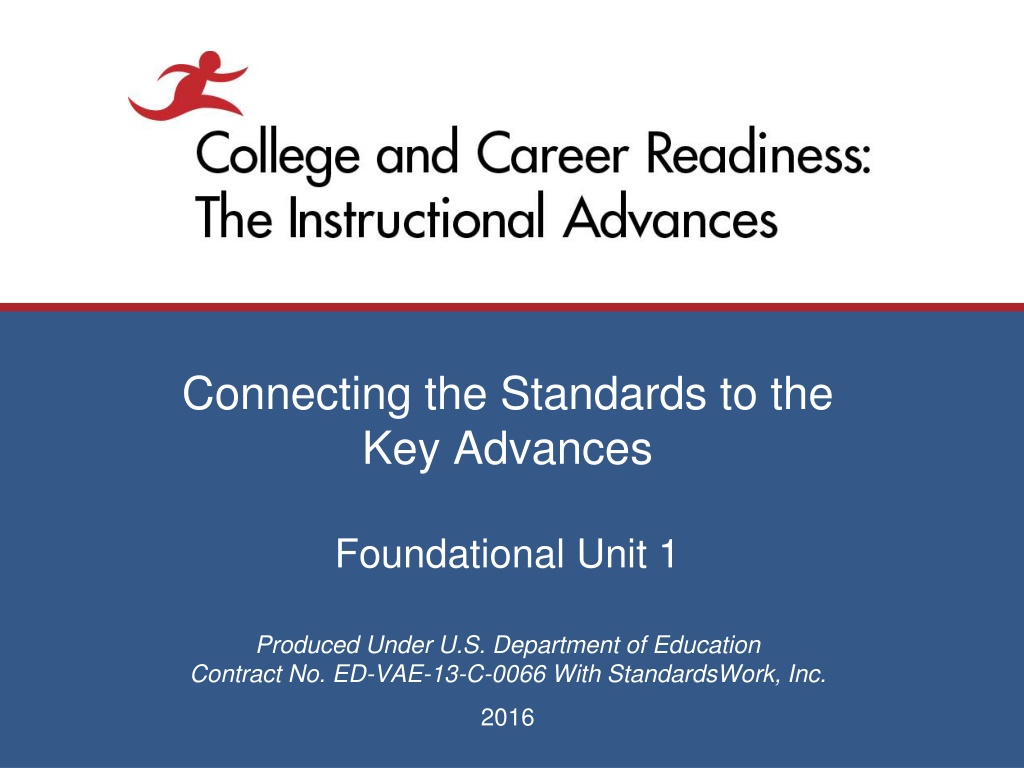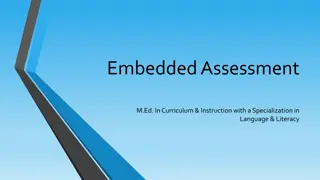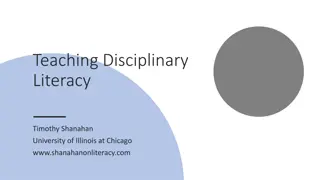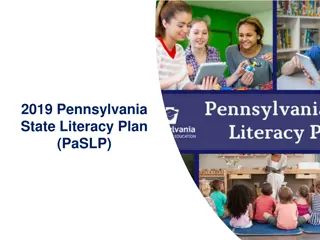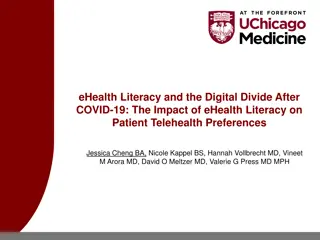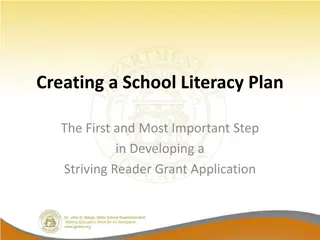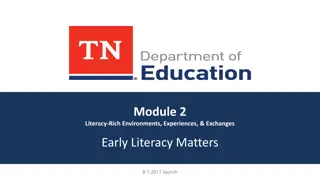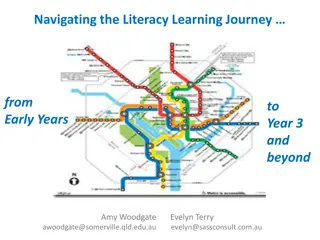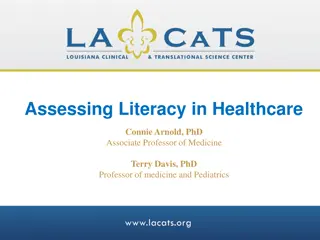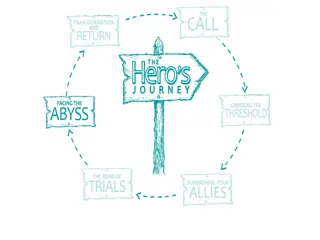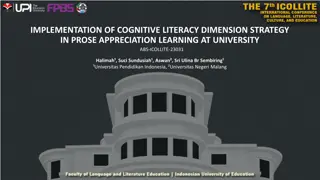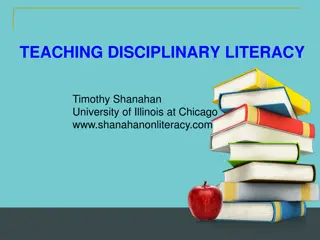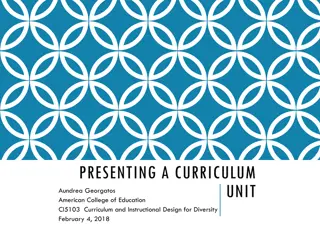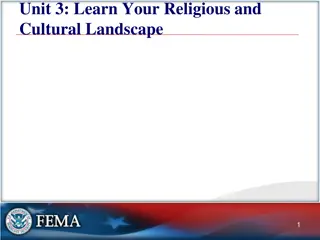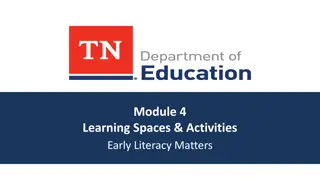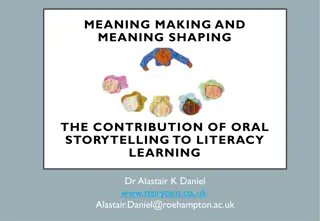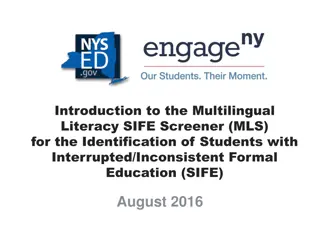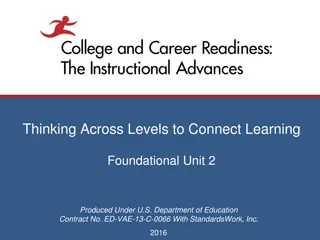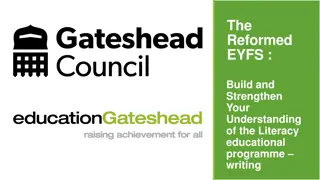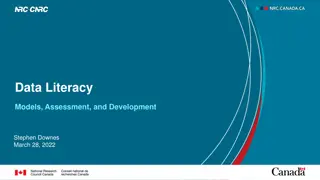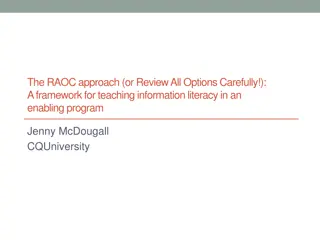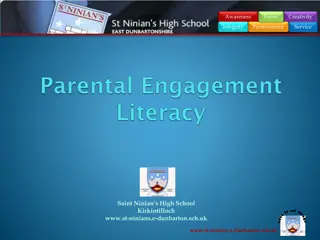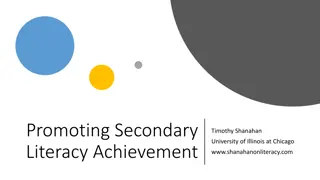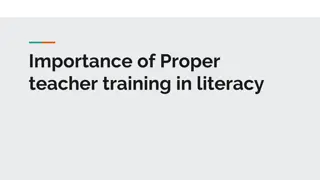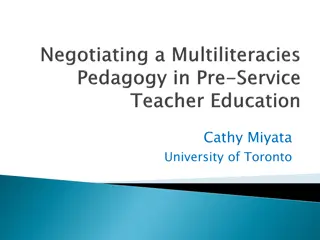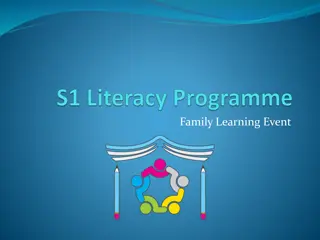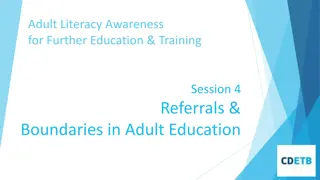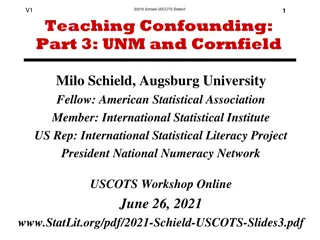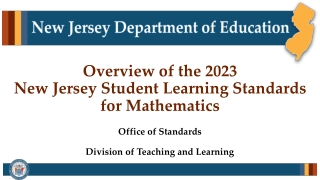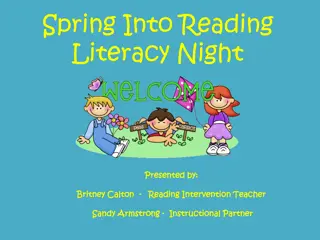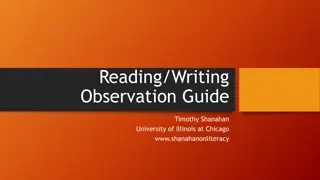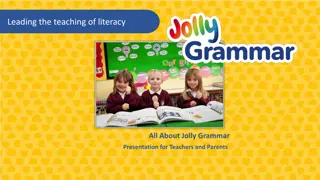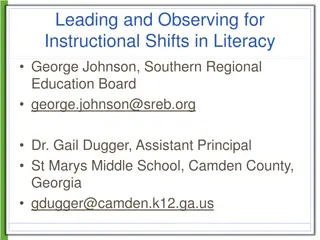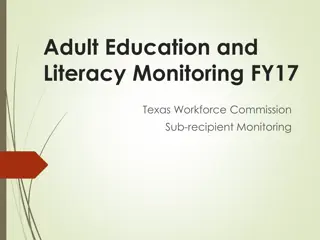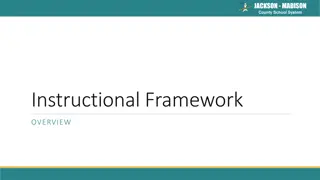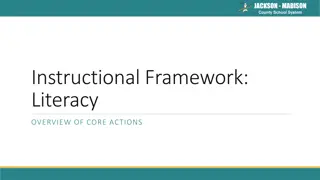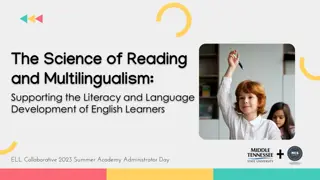Connecting Literacy Standards to Key Advances Unit 1 Overview
Exploring the structure of literacy standards, three key advances prompted by CCR standards, and objectives of Unit 1 in connecting CCR standards to key advances. Includes hands-on practice and discussion questions for participants.
Download Presentation

Please find below an Image/Link to download the presentation.
The content on the website is provided AS IS for your information and personal use only. It may not be sold, licensed, or shared on other websites without obtaining consent from the author. Download presentation by click this link. If you encounter any issues during the download, it is possible that the publisher has removed the file from their server.
E N D
Presentation Transcript
Connecting the Standards to the Key Advances Foundational Unit 1 Produced Under U.S. Department of Education Contract No. ED-VAE-13-C-0066 With StandardsWork, Inc. 2016
Structure of the Literacy Standards Four Strands: Reading, Writing, Speaking and Listening, Language Anchor Standards for Each Strand: 10, 9, 6, and 6 Standards Listed by Level: A (K-1), B (2-3), C (4-5), D (6-8), and E (9-12) 2
Three Key Advances Prompted by the CCR Standards 1. Text Complexity: Regular Practice With Complex Text (and Its Academic Language) 2. Evidence: Reading and Writing Grounded in Evidence From Text 3. Building Knowledge: Building Knowledge Through Content-Rich Nonfiction 3
Key Advances Build Toward College and Career Readiness 4
Unit 1 Objectives Connecting the CCR Standards to the Key Advances Become familiar with the CCR Standards for ELA/Literacy and how the standards are organized. Learn how tightly linked the standards are to one another. Understand in concrete terms how the standards are connected to the three key advances. 5
Hands-On Practice Now let s do some work naming the CCR standards . . . 6
Materials (Part One) Directions for Participants Worksheet: Naming the Standards 7
Directions (Part One) 1. Circle keywords in each Anchor Standard on the Naming the Standards worksheet before arriving at a nickname. 2. Assign a one- to five-word nickname for each standard assigned to you. Go with your gut regarding the essential heart of each standard, and don t overthink your answer. 3. Compare notes at your table and discuss how each nickname does or does not capture the essence of its standard. Work Session 45 minutes 8
Discussion Questions What are some of the nicknames created for the standards? Are there any standards you struggled with? 9
Hands-On Practice Now let s do some work connecting the CCR standards to the key advances . . . 10
Materials (Part Two) Directions for Participants Resource: CCR Anchor Standards cards 11
Directions (Part Two) 1. Read your Anchor Standards card. Look at the four categories posted around the room, and ask yourself, Which key advance does this standard best illustrate or exemplify? 2. When you have settled on which category your standard best fits, walk over to stand by that poster. 3. Read your standard aloud to the other participants and listen to their standard. Work Session 45 minutes 12
Discussion Questions What do you notice about the colors of the cards in your key advance? Can you figure out what the colors represent? What are some rationales that explain why you chose to relate that standard to that key advance? Did anyone have a hard time deciding which group to pick? Did anybody wonder about being part of another group? What key advances were the contenders? How about those of you in the other category? What standard do you have? Why did you choose to stand under the other sign? Does anyone from the other advances want to adopt them? If so, make a case for why that standard belongs there. 13
Reflections Each key advance depends on standards from the four strands. Standards from the four strands come together in aligned instruction to realize the key advances. Reading Standard 1 (text evidence) and Reading Standard 10 (text complexity) play a special role because they operate whenever students are reading or researching, writing, or speaking about what they have read. 15 minutes 14
Next Steps How has participating in this activity changed your thinking about the CCR Standards? How will you use the information and understanding you have acquired to improve your teaching practice and student learning? What additional training and tools would strengthen your ability to do so? 15
